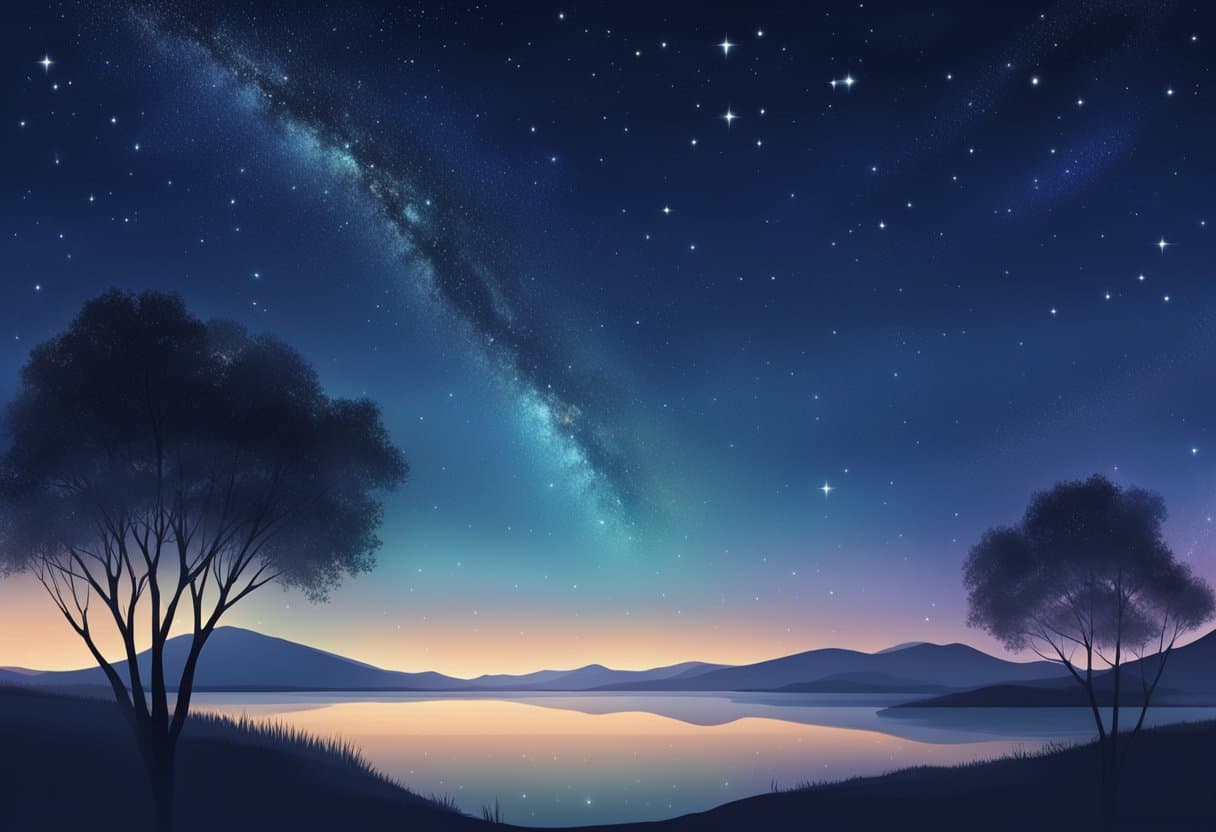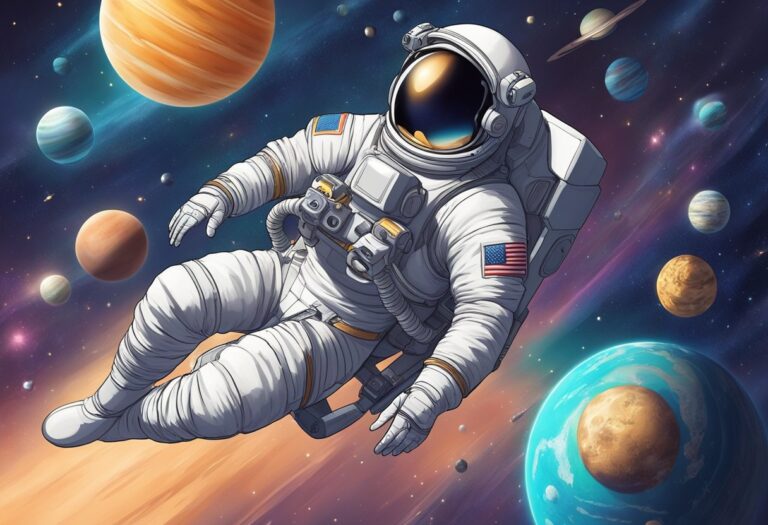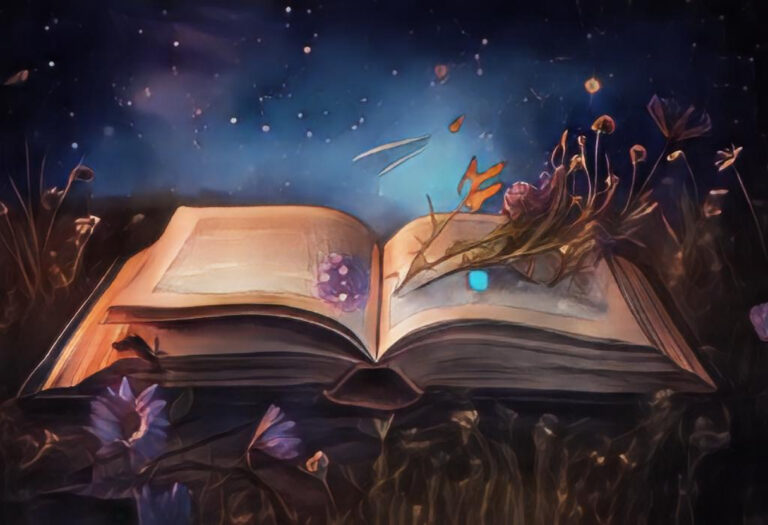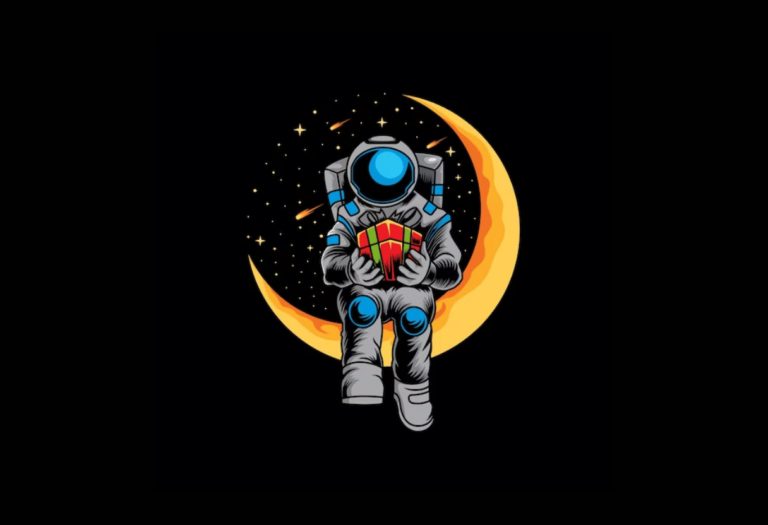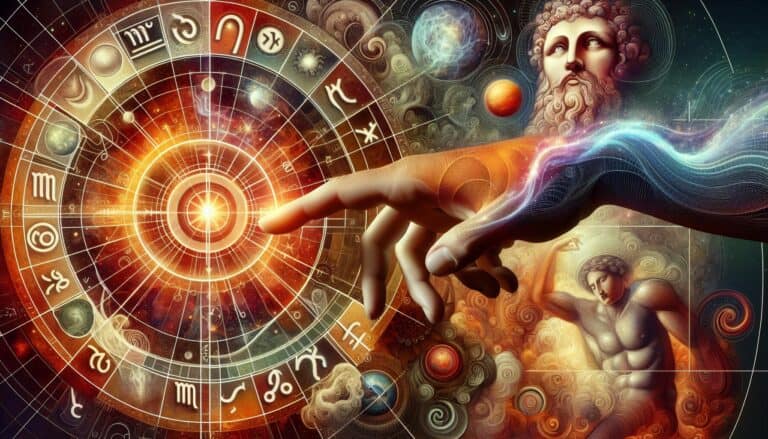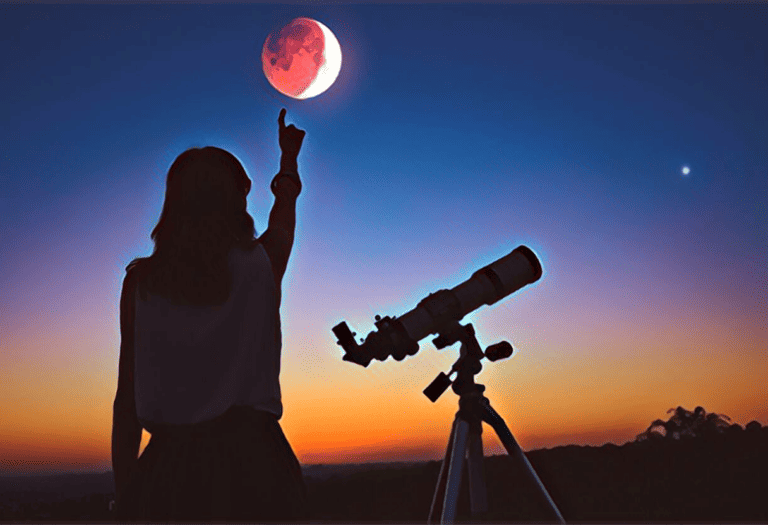Observing the night sky is a timeless activity that can connect you to the vastness of our universe.
The best time to view stars depends largely on a few key factors, including the time of night, the season, and the phases of the Moon. These elements come together to create ideal conditions for stargazing, with the aim of maximizing the number of stars visible and the clarity of your view.
To optimize your stargazing experience, it’s important to seek out moments when the sky is darkest. Typically, this happens when the Moon is not full, either during a new moon or a crescent phase, as the moonlight can outshine many stars. Additionally, finding areas far from the bright lights of cities can greatly enhance your view of the stars, as light pollution significantly dims the celestial glow.
Strategic timing is key, and knowing when key astronomical events are taking place can provide a more rewarding stargazing experience.
The best time for star viewing depends on moon phases, light pollution, and seasons. Ideal conditions are during a new or crescent moon, away from city lights, and during astronomical events. Winter offers clearer skies for constellations like Orion, while summer is best for viewing the Milky Way.
Understanding the Basics of Stargazing
When embarking on the journey of stargazing, you’ll find that certain conditions favor a clearer view of the night sky. Your observation experience largely depends on both when and where you choose to look up.
-
Time of Year: Different constellations are visible at various times of the year, so plan according to what you wish to observe. For example, some constellations like Orion are winter constellations and are best observed during colder months.
-
Time of Night: After sunset, there is a period known as astronomical twilight, after which the sky is dark enough for stargazing. Typically, this occurs about 1-2 hours after sunset and before sunrise.
-
Moon Phase: A new moon is ideal for star observations, as the sky is darker without the moon’s brightness. Conversely, a full moon may impede your view. Learning the lunar cycle can greatly enhance your stargazing experience.
-
Light Pollution: Dark skies are a key requirement, so find an area away from city lights. Consider travel to local parks or designated Dark Sky places, if feasible.
To get started, familiarize yourself with some basic constellations and use a star chart or stargazing app to navigate the night sky. Remember, the more you practice, the more adept you’ll become at identifying celestial wonders.
Ideal Seasons for Stargazing
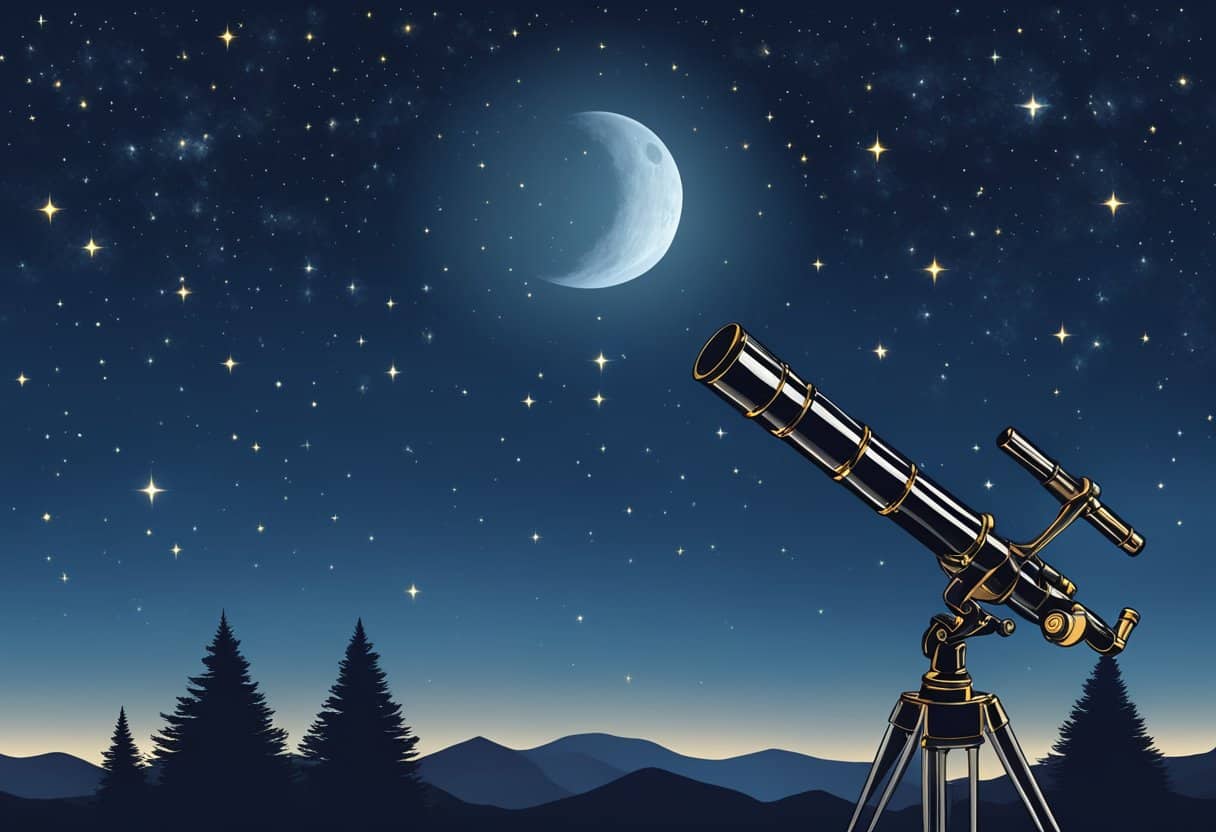
Choosing the right time of year can significantly enhance your stargazing experience. Certain seasons provide clearer skies and the opportunity to view a variety of celestial wonders that are not always visible year-round.
Winter Skies
Winter offers some of the clearest, darkest skies due to the cold, dry air which reduces atmospheric distortion. You’ll find constellations like Orion and Taurus dominating the night, along with stunning sights like the Orion Nebula. Look towards the Winter Triangle, an asterism composed of the bright stars Sirius, Betelgeuse, and Procyon.
Summer Skies
Summer skies bring a new host of constellations to the forefront, such as Scorpius and Sagittarius. During this time, your view of the Milky Way can be particularly breathtaking due to its higher position in the sky. Summer stargazing can be enhanced by warm, comfortable nights, making it easier to spend time outside. Venture out to view the Summer Triangle, made up of the stars Vega, Deneb, and Altair.
Transitional Seasons
Spring and autumn are considered transitional seasons, offering a mix of winter and summer constellations. In these seasons, you’ll experience a balance of night temperatures and typically fewer clouds, making it a comfortable time for stargazing. The visibility of certain astronomical events like eclipses or meteor showers often peaks during these months. Pay attention to these transitional periods for unique observations such as the Lyrid meteor shower in April or the Orionids in October.
Moon Phases and Stargazing
When planning your stargazing activities, the phase of the Moon is a crucial factor to consider, as it greatly affects the visibility of celestial objects.
New Moon
During the New Moon phase, the Moon is situated between the Earth and the Sun, rendering it invisible to observers on Earth. This phase offers the darkest skies and is optimal for viewing faint stars, galaxies, and meteor showers. Your best opportunities for stargazing occur around this time when the moonlight does not interfere with the night sky.
Full Moon
Conversely, the Full Moon phase provides a completely illuminated Moon as seen from Earth, due to its position opposite the Sun. This period is less ideal for stargazing as the brightness of the Moon can obscure dimmer stars and celestial objects. When you observe the sky during a full moon, you’ll notice a significant reduction in the visibility of faint stars.
Light Pollution and Its Impact on Star Visibility
Light pollution is a significant factor affecting your ability to see stars at night. When artificial light floods the night sky, it obscures the dimmer stars, making them harder to see. This effect, known as skyglow, intensifies in urban settings where excessive lighting is common.
When making observations, latitude is a crucial aspect to consider. Research indicates that areas near 50N and S experience more severe light pollution, which means you’re likely to see fewer stars in these regions. Urban areas further amplify this effect, substantially reducing the number of stars visible to the naked eye.
Here’s how levels of light pollution affect star visibility:
- Low: Natural ambiance with no interference; ideal for stargazing.
- Moderate: Visible near cities; some dim stars may be obscured.
- Severe: City centers; the majority of stars are invisible.
To gauge the brightness of the night sky affected by light pollution, some astronomers use the Bortle scale, ranging from 1 (dark skies) to 9 (inner-city skies). A lower number on the scale suggests a better condition for viewing stars.
Here are measures you can take to combat light pollution:
- Use dark-sky friendly lighting
- Implement lighting ordinances in your community
- Advocate for education and awareness about the issue
For optimal star viewing, seek out locations with minimal artificial lighting, such as designated dark-sky preserves away from city lights. Your efforts to reduce light pollution not only enhance star visibility but also contribute to mitigating its consequences on human health and the environment.
Key Astronomical Events
To experience the wonders of the night sky at their best, plan to observe during key astronomical events. These events offer unique opportunities to see celestial phenomena not typically visible.
Meteor Showers
Meteor showers are celestial events where numerous meteors streak across the night sky, originating from a common point. The Perseids, peaking in August, and the Geminids, reaching its height in December, are two prominent meteor showers you shouldn’t miss. These showers are best viewed in an area free from city lights, after midnight and before dawn.
Planetary Alignments
At times, planets align in the night sky in a way that is visible from Earth. These planetary alignments, or conjunctions, can bring planets such as Jupiter and Venus close together, creating a bright and remarkable display. The rarity of these events makes them a must-see; for example, the Great Conjunction of Jupiter and Saturn occurs once every 20 years.
Eclipses
Eclipses are among the most dramatic astronomical events. A lunar eclipse occurs when Earth lies between the Sun and the Moon, casting a shadow on the Moon. A solar eclipse, conversely, happens when the Moon passes between the Sun and Earth, briefly dimming daylight. Safety is paramount during a solar eclipse; you must use proper eye protection to view this event.
Choosing the Right Equipment for Stargazing
When embarking on a journey to explore the stars, choosing the right equipment is critical.
Telescopes: Your primary tool for stargazing is a telescope. Select a telescope based on the following criteria:
- Aperture: This is the diameter of the telescope’s main optical component. A larger aperture allows more light to enter, enabling you to see fainter objects.
- Mount: Choose between an alt-azimuth mount for simple up-down and left-right movements or an equatorial mount for tracking celestial objects as the Earth rotates.
- Portability: If you plan to travel to dark skies, opt for a telescope that is easy to carry.
Binoculars: A pair of binoculars can be a great starting point and a portable alternative to telescopes. Look for a pair with specifications such as 7×50 or 10×50. The first number represents magnification, while the second indicates the aperture in millimeters.
Accessories:
- Star Charts or Apps: Use these to navigate the night sky.
- Eyepieces: Different eyepieces provide varying magnifications. It’s useful to have a small selection.
- Filters: These can enhance your view of planets, nebulae, and other celestial objects by blocking out certain wavelengths of light.
Remember, the best equipment depends on your personal stargazing goals, budget, and the locations where you plan to observe. For details on equipment selection, consider resources like Stargazing Basics and A Program for Beginners. Start with equipment that matches your level of experience and upgrade as your passion and expertise grow.
Frequently Asked Questions
Stargazing is a rewarding hobby, but to maximize the experience, you should be aware of certain factors such as atmospheric conditions, lunar phases, and the time of year.
What are the optimal conditions for stargazing?
Clear skies with minimal light pollution are ideal for stargazing. Being far from city lights and at higher elevations can significantly improve the visibility of stars.
How does the time of year affect star visibility?
Seasonal changes alter the constellations visible in the night sky. Winter often provides clearer skies due to the cold air being less dense with particles, enhancing star visibility.
When can we expect the darkest skies for observing celestial bodies?
The darkest skies are typically found during the new moon phase when moonlight does not interfere with the faint light from distant stars and galaxies.
How does moon phase impact the visibility of stars at night?
A full moon can brighten the sky and make faint stars harder to see, whereas a new moon phase offers the darkest skies, making it the best time for observing stars and other celestial objects.
What time in the evening is most suitable for using a telescope to view stars?
The best time for telescope viewing is usually after astronomical twilight when the sun is 18 degrees below the horizon and the sky is fully dark.
What should one consider when planning a stargazing activity this week?
Check the weather forecast for clear skies, aim for a night during the new moon phase, and plan to stargaze in a remote location away from urban light pollution for the best experience.

